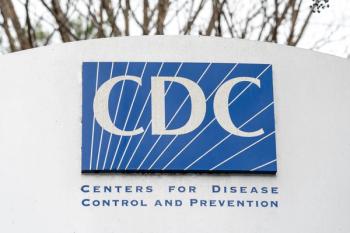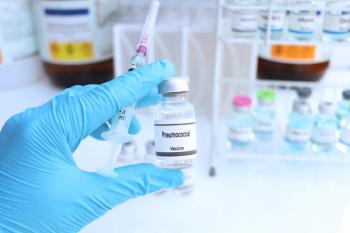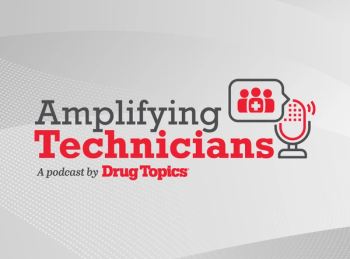
- Drug Topics September/October 2025
- Volume 169
- Issue 5
Pharmacists Improve Diabetes Outcomes Through Continuous Glucose Monitoring Services
Key Takeaways
- CGMs provide real-time glucose data, aiding in diabetes management by allowing patients to track patterns and make timely adjustments to their regimen.
- The 2025 ADA Standards of Care recommend CGMs for type 1 diabetes and insulin therapy patients, offering continuous data without finger sticks.
The immediacy of data from these monitors is essential in educating patients on managing their chronic disease states.
Continuous glucose monitors (CGMs) are medical devices used by patients with diabetes to measure glucose levels, providing immediate data to aid in decision-making.1 Diabetes is one of the most common chronic disease states in the US, with an estimated 38.4 million people affected, according to the CDC.2 CGMs are a valuable tool in managing diabetes, allowing patients to see how various factors, including food, insulin, stress, and physical activity, affect their glucose levels throughout the day.3 By offering instant data, CGMs allow patients to track patterns, identify dangerous highs and lows, and make timely adjustments to their diet or medication.
The 2025 American Diabetes Association Standards of Care3 recommend CGMs for diabetes management in patients with type 1 diabetes, as well as youths and adults with diabetes using any form of insulin therapy. In addition, CGMs should be considered in adults with type 2 diabetes who are treated with glucose-lowering medications other than insulin to achieve and maintain individualized glycemic goals.3 CGMs may be preferred over self-monitoring blood glucose levels because they eliminate the need for repeated finger sticks. Instead, they provide continuous data and transmit glucose readings directly to the patient’s smartphone or a receiver. This enables patients to track glucose trends, receive alerts for hyperglycemia or hypoglycemia, and see how diet, stress, and exercise affect their levels. In studies, data show that CGMs improve hemoglobin A1c (HbA1C) levels, reduce the frequency of hypoglycemia episodes, and increase time in goal range, all essential metrics for patients with diabetes.3
Pharmacists are well positioned to provide education and monitoring services to patients using CGM devices, which may improve outcomes. Community-based pharmacists have a growing scope of practice across the country, including the management of diabetes technology and medication regimens.4
However, there is a lack of studies in community pharmacy settings. This is often due to the lack of funding for these services for pharmacists.4 The studies conducted in community pharmacies have shown positive results from pharmacist-led CGM services.2,3 One study evaluated outcomes from 30 patients with diabetes after they were enrolled in a pharmacist-led CGM interpretation program.5 The study findings showed that 22 of the 30 participants experienced a clinically significant reduction in HbA1c (with an average reduction of 2.1%).5 The direct link explored between implementing CGM programs and a reduction in HbA1c demonstrates how CGMs can be powerful, especially when combined with the accessibility of a community pharmacist.
Pharmacists can be trained to interpret CGM data reported through ambulatory glucose profiles and make recommendations to improve diabetes management based on the reports.4 Pharmacists can evaluate the patient’s lifestyle factors, such as diet and exercise, along with their medication regimen, to see how these factors may be affecting the current level of diabetes control. This process can improve outcomes in several ways. First, it can increase patient adherence to their medication regimen, as well as encourage lifestyle modifications.5 A scoping review concluded that pharmacist-led CGM programs can lead to better quality of life, increased empowerment, and improved glycemic control.4 In the long-term, well-controlled diabetes reduces the number of complications and hospitalizations experienced by patients secondary to diabetes.3
Pharmacists provide personalized care and education for patients daily. As CGMs become increasingly recognized for their role in improving diabetes management, pharmacists are well suited to guide patients on using this technology to its full potential.
To read these stories and more,
Ready to impress your pharmacy colleagues with the latest drug information, industry trends, and patient care tips? Sign up today for our
REFERENCES
1. Continuous glucose monitoring (CGM). Cleveland Clinic. Updated May 24, 2024. Accessed July 7, 2025. https://my.clevelandclinic.org/health/articles/continuous-glucose-monitoring-cgm
2. National Diabetes Statistics Report. CDC. May 15, 2024. Accessed July 7, 2025. https://www.cdc.gov/diabetes/php/data-research/index.html
3. American Diabetes Association Professional Practice Committee. 7. Diabetes technology: standards of care in diabetes-2025. Diabetes Care. 2025;48(1 suppl 1):S146-S166. doi:10.2337/dc25-S007
4. Vascimini A, Saba Y, Baskharoun F, et al. Pharmacist-driven continuous glucose monitoring in community and ambulatory care pharmacy practice: a scoping review. J Am Pharm Assoc (2003). 2023;63(6):1660-1668.e2. doi:10.1016/j.japh.2023.07.010
5. Pasour T, Sheehan L, Troyer M, Conger M, Carson P. Evaluation of a pharmacist-led personal continuous glucose monitor workflow to improve glycemic management in an internal medicine clinic. J Am Pharm Assoc (2003). 2024;64(4):102139. doi:10.1016/j.japh.2024.102139
Articles in this issue
about 1 month ago
OTC Product Roundup: Pain Relief and Symptom Managementabout 1 month ago
Guidelines Are Key for Treating Substance Use Disorderabout 1 month ago
Vaccine Hesitancy Rises, Highlighting a Crucial Role for Pharmacistsabout 2 months ago
Pharmacists Showcase Valuable Knowledge on Infectious Diseaseabout 2 months ago
Patient-Centered Care Balances Pain and Addiction Concernsabout 2 months ago
Celebrating the Hard Work Pharmacists Do EverydayNewsletter
Pharmacy practice is always changing. Stay ahead of the curve with the Drug Topics newsletter and get the latest drug information, industry trends, and patient care tips.








